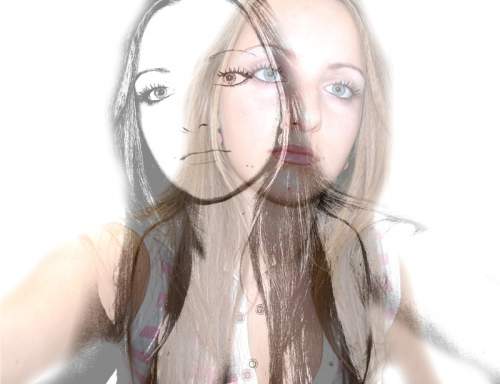
Schizoaffective disorder
Schizoaffective Disorder (SAD) is a disorder where both schizophrenia positive symptoms(delusions, hallucinations) and mood disorders symptoms (major depressive disorder, maniac of bipolar, depression) are present. According to the American Psychiatric Association (APA). SAD is defined as a “period of uninterrupted illness where individuals meet criteria for major mood episode and for schizophrenia symptoms. As in any psychotic disorder, there is not a specific cause but a wide variety of causes that include genetic, biochemical, environmental factors.
Symptoms
Extreme mood shifts, Hallucinations, disorganized thoughts and delusions (strong beliefs about something contrary to superior evidence of the contrary). Poor temper control, lack of concern about social norms such as hygiene and order.
Schizoaffective disorder is less common than schizophrenia and mood disorders. This condition is more common in women than men.
Psychosis symptoms such as hallucinations and mood changes may occur simultaneously or alone. The course of this disorder may involve cycles of severe symptoms followed stages of relative stability. It is assumed that the disorder primarily affects cognitive and emotional activity, but also usually contributes to ongoing problems of behavior and motivation.
These may include:
Appetite and energy changes (too much appetite, lack of energy).
Disorganized and illogical speech.
False beliefs (delusions ) and persecutory thoughts (for example, someone is trying to hurt you, someone is following or spying on you) paranoia, or strange thoughts that special messages are hidden in common places (delusions of reference).
Lack of concern with hygiene or grooming.
Mood shifts that are either too good(euphoric states) or depressed or irritable states.
Sleeping problems such as insomnia.
Cognitive deficits in areas such as memory, attention.
Predominance of guilt, anguish or hopelessness feelings.
Hallucinations (visual, tactile, or olfactory).
Social isolation, lack of motivation for social stimulus.
Symptoms usually begin in early adulthood(same as in schizophrenia), although rarely, is also diagnosed in childhood (before 13 ). The prevalence of the disorder is unclear ( because the case studies used varying diagnostic criteria ), although there is a consensus that is less than 1% of the population and possibly be in the range between 0.5 % and 0.8 %.
The diagnosis is based on reported experiences by patients and clinical observation. Currently, there are no laboratory tests to detect the disorder. As a group, people with schizoaffective disorder have a better prognosis (forecast) than those with schizophrenia, but a worse prognosis than those with mood disorders .
Treatment
The foundation of treatment is pharmacotherapy with some antipsychotic combined with an antidepressant or mood stabilizer or both. Antipsychotic drugs work primarily by suppressing the activity of dopamine (a neurotransmitter related with pleasure), while antidepressants increase active levels mainly of serotonin (involved in mood, appetite, sleep behavior). The exact mechanism of action of mood stabilizers is uncertain.
Psychotherapy , vocational and social rehabilitation are also important. In more serious cases – where there is risk of danger to the patient or to others- hospitalization may be necessary.
It is likely that people with schizoaffective disorder have additional conditions (comorbidities ) , including anxiety disorders and substance abuse. It is highly likely that children diagnosed with this disorder have other Comorbid, such as pervasive developmental disorder, autism and learning difficulties. In addition, the life expectancy of people with the disorder is less than those without the disorder, due to increased physical problems and a high suicide rate.
Sources
Kantrowitz, J. T., & Citrome, L. (2011). Schizoaffective Disorder. CNS Drugs, 25(4), 317-331.
Pagel, T., Baldessarini, R., Franklin, J., & Baethge, C. (2013). Characteristics of patients diagnosed with schizoaffective disorder compared with schizophrenia and bipolar disorder.Bipolar Disorders, 15(3), 229-239
Lake, C., & Hurwitz, N. (2008). Schizoaffective Disorder—Its Rise and Fall: Perspectives for DSM-V.Clinical Schizophrenia & Related Psychoses, 2(1), 91-9
Marneros, A. A. (2003). The schizoaffective phenomenon: the state of the art. Acta Psychiatrica Scandinavica. Supplementum, 10829.









